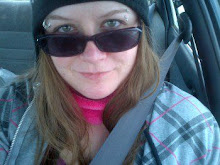(Photo from Wikipedia Commons)
Um, no it's not.
The wild bird sphere utilizes some odd terminology. A bird that is more white (or just lighter) than usual used to be called albino, or partially albino. More recently, the term "leucistic" has sprung up. None of these are particularly useful, or even correct.
Why the insistence on using such generic terminology? Am I missing something? Why has the knowledge of color genetics gained through other research on other animals (including birds) not gained regular usage amongst birders?
I spent a lot of time researching color genetics in horses, and in Peach-Faced Lovebirds, with minor forays into the color genetics of dogs, cats, other parrots, and chickens. I have gotten started on a degree in genetics (just some first and second year courses under my belt).
Albinism is a particular condition, a complete absence of pigmentation. No, you can't have a partially albino individual. They either are albino, or they aren't. Partially albino is a useless, antiquated term. In addition, if the bird is completely white, with dark legs and eyes, it is NOT an albino.
Within domestic bird populations (and occasionally wild birds), the first color mutations to occur are usually reduced pigment (dilution genes) and random de-pigmentation (spotting genes).
Small genetic mutations allow for different colors. These mutations do occur in wild populations (Budgerigars, in Australia, for example - blue birds are occasionally seen in the wild) but these individuals do not usually live long enough to pass on their genetics.
The actual mutations of the genes involved do not occur more often in captivity than in the wild (as far as I know however, this hasn't been studied). The difference is that they are usually disadvantageous in wild individuals (again, leading to a lessened chance for survival), but are almost always selected FOR in captivity. Why do these small mutations occur then, if they don't translate to an advantage in wild animals? That's that little "evolution" thing, you know, small changes in genetic code, some of 'em work, some of 'em don't.
Most "off-color" or "aberrant" wild birds are not diluted - they have white patches in their plumage, which is otherwise normally colored. Sometimes, this can be caused by injury - say a small bird is hit by a hawk but escapes. It may acquire scar tissue, leading to some white-colored feathers. However, most of these aberrant wild birds have much more white coloring than we would expect from an injury, such as an all-white head, or the Pigeon at the top of this post. These individuals have a spotting gene. Just like pinto horses, and Border Collies. :)
I would very much like to see a better term applied to these birds, "leucistic" being much too general. Click
here for a very brief overview of the word. The most important point is that it is a VERY general description of a phenotype, indicating *nothing* of the genotype. If the phenotype is visible enough to make enough of a distinction to label the bird as "leucistic", it's likely visible enough to say whether the individual is diluted, or spotted.
Here's an example. Pictured below are, left to right, a bay, a buckskin, and a bay pinto.



The buckskin is a bay horse with a dilution gene. The pinto is a bay horse with a spotting gene. But both could, technically, be considered "leucistic bays", even though the two phenotypes are so totally different, and caused by completely unrelated genes. How silly it would be to lump them together.
So why do we lump it all together with birds? Even at a distance, a spotted Pigeon is clearly distinct from a diluted (think "Fawn-colored") Pigeon. Aren't we as birders scientifically sophisticated enough to make this basic distinction?
If you made it all the way to the end, I thank you for your time, and apologize for my long-windedness!












